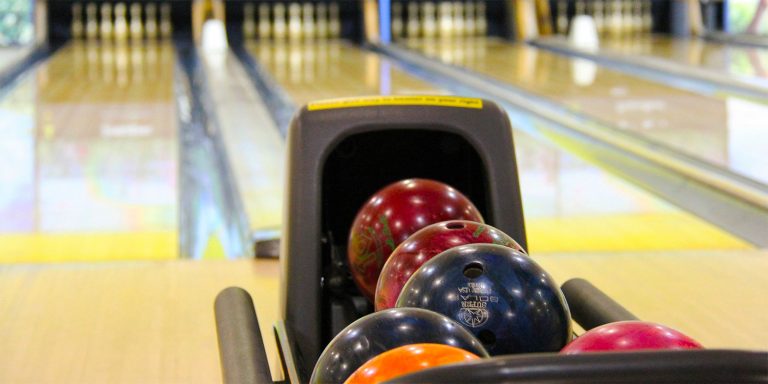The success rates of these bowling splits will make you want to give up.
The 7-10 split is famously the hardest shot in bowling. Most of us will never pick up the spare on a 7-10 split. (I rarely pick up the spare on any split, but my disturbing lack of bowling skill isn’t on trial here.)
So let’s once again welcome in modern analytics to ruin a sport “fact” we’ve always held dear.
A writer for Slate.com analyzed 447,000 worth of frames from PBA tournaments from 2003 through last year. Bowlers got strikes in about 60 percent of those frames, leaving 180,000 when they knocked down fewer than 10 pins on their initial roll and needed to get a spare.
Then he analyzed the frequency at which spare arrangements (min. 50 attempts) were successfully completed.
And there it was: The 7-10 split was not the hardest shot in bowling. The 4-6-7-9-10 split was. Doesn’t quite roll off the tongue.
11 hardest bowling splits according to study
Bowling is a game of skill and strategy, but it’s also a game of chance. Sometimes, even the best bowlers in the world will find themselves facing a split that’s too hard to handle.
Here are the 11 most difficult spare scenarios in bowling, based on completion percentage or success rate. These splits are so hard, even professional bowlers struggle to make them.
1 | 4-6-7-9-10
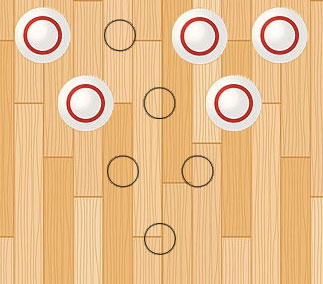
Success rate: 0.3 percent.
Also known as the “Greek Church” split because it resembles the shape of an Orthodox Church. Yeah, well I think I can see the dome, towers, and spires.
Anyway, It’s hard to believe with this many pins available it’s hard to hit them, but the physics makes it tricky to get the pins flying around into each other.
Due to the wide spacing of the pins, it’s difficult to generate enough pin action to knock them all down. Professional bowlers and coaches recommend aiming for the left side of the 4 pin and hoping for a lucky bounce to take out the 7-9-10. I guess we can attribute the 0.3% success rate to luck then.
2 | 4-6-7
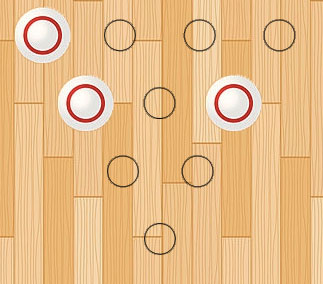
Success rate: 0.6 percent.
The 4-6-7 split is considered one of the more difficult splits to convert. It is a challenging spare to pick up as it involves knocking down the pins located on the left and right sides of the lane, with a gap of one pin in between, while leaving the back row of pins standing.
With that success rate, hope. Use hope and luck as part of your strategy to convert.
3 | 7-10

Success rate: 0.7 percent.
This split is most commonly known as “goalposts” (if you love soccer) and “bedposts” if you like all things happening in bed.
The position of the pins is probably enough to make you want to give up trying.
4 | 4-6-10
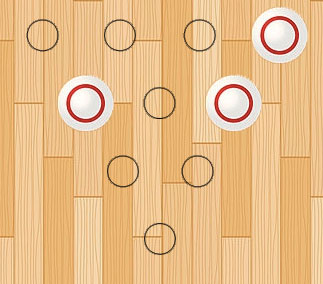
Success rate: 0.8 percent.
This is just similar to the 4-6-7 split, but it’s interesting to know that 4-6-10 split is not as hard as the former. The next time your opponent has that split, tell him you have a 0.2 percent better chance of converting.
5 | 3-7-9
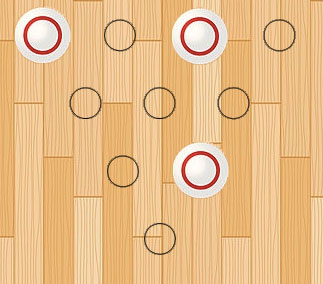
Success rate: 0.8 percent.
To convert this, you need a lot of power on your bowling ball to create a lot of bounces for the pins when they get hit. This gives you a lot of chances or luck to take down all three of them.
6 | 4-6-7-10
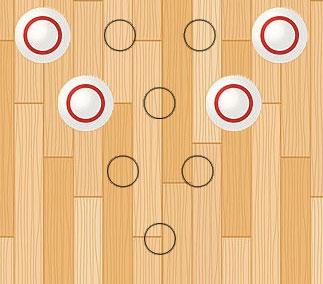
Success rate: 1 percent.
The 4-6-7-10 split is also known as “Big Four”, the “Golden Gate split”, “Big ears”, or “Grandma’s teeth”. I’ll probably call it the Golden Gate split if I convert all of them. Otherwise, it’s any of those names.
At 1%, this is one of the hardest bowling splits many pros get into. You need to focus on hitting either side with enough power that the pins bounce off to the other side and knock them also.
7 | 4-6-7-8-10
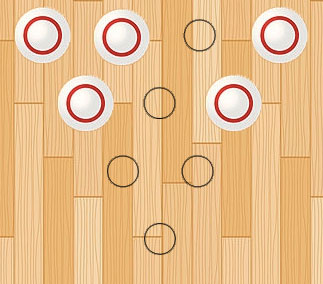
Success rate: 1.3 percent.
The split requires precision and accuracy to pick up. But with 1.3% conversion rate, you’re better off than the Orthodox church split. Now, hit the pins on either side with enough power to make them fly off or bounce to the other pins.
8 | 2-8-10
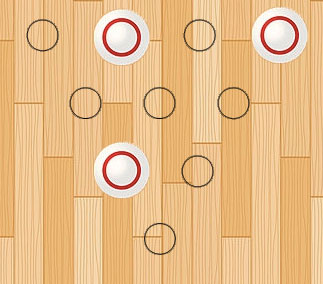
Success rate: 1.6 percent.
This is similar to, or kinda like, a mirror split of 3-7-9 but with twice the success rate. I assume this split is suitable for right-handed bowlers, or right-handed bowlers using their left hand. Either way, you still need a lot of bounce and luck to convert them.
9 | 4-6

Success rate: 1.8 percent.
This time, and going forward, the hardest bowling splits involve two pins side by side but with a one pin distance between them.
To convert the 4-6 bowling split, try hitting the side most part of one pin with enough power to tip it going to the other pin.
10 | 7-9

Success rate: 2.6 percent.
Although the bedpost split only has a 0.7% success rate, the 7-9 split is nearly four times more achievable. In other words, it’s not as difficult as it may seem.
So you have to expect that you will convert less than three out of a hundred 7–9 splits when playing.
11 | 8-10

Success rate: 3.1 percent.
The least hard bowling split in our list is another mirror split for 7-9 but with a better success rate. I will, once again, attribute the 8-10 bowling split to the favorability of right-handed players.
11 hardest bowling splits for “Amateurs”
But those are the rates for professional bowlers. What are the hardest shots for us once/twice-a-year bowler types? And these are in reverse order, for dramatic effect.
11 | Hands covered in grease from standard bowling alley fare
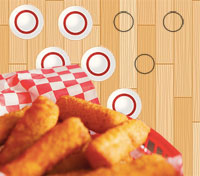
Estimated success rate: 51 percent.
10 | Just want to get back to your bowling pin-shaped beer
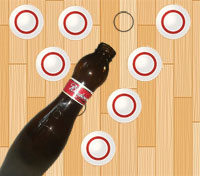
Estimated success rate: 50 percent. Specially, the beer with less alcohol in a pin-shaped glass.
9 | Just the head pin sitting there, taunting you

Estimated success rate: 49.999 percent. (Professionals pick it up more than 96 percent of the time. Which means they DO miss and feel humiliated, just like you.)
8 | About to go when someone changes name to POO/ASS
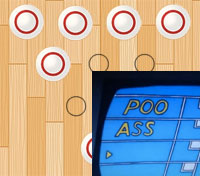
Estimated success rate: 45 percent.
7 | Get into macho competition over ball speed due to radar display

Estimated success rate: 40 percent. Sometimes just flinging it without thinking isn’t a terrible strategy.
6 | Somehow you only knocked down one pin in the back corner on your first roll
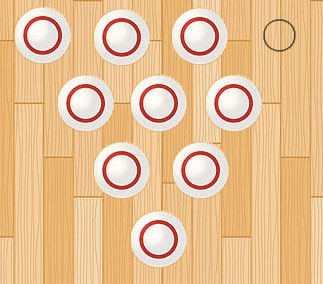
Estimated success rate: 20 percent. I manage to be stuck with this arrangement two or three times every game. And I never pick up the spares.
5 | Rock-n-Bowl playing Pour Some Sugar on Me
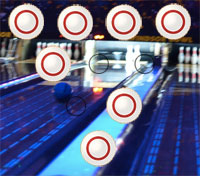
Estimated success rate: 18 percent.
4 | Rock-n-Bowl playing any song besides Pour Some Sugar on Me

Estimated success rate: 17 percent. The flashing lights and dark alleys are wildly distracting, but at least with Pour Some Sugar on Me you get that little motivation boost.
3 | Thumb gets stuck in alley ball
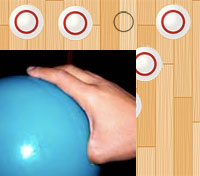
Estimated success rate: 11 percent.
2 | Bowling under duress because you get into a standoff with the very serious guy in the lane next to you over who’s going to bowl first

Estimated success rate: 5 percent.
1 | The Brunswick thing comes down, blocking the pins, and won’t go back up so you have to call the attendant
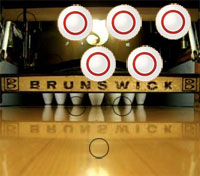
Estimated success rate: 0.01 percent. The other 99.99 percent of the time, the thing “accidentally” sweeps your pins away and you have to start the frame over.
